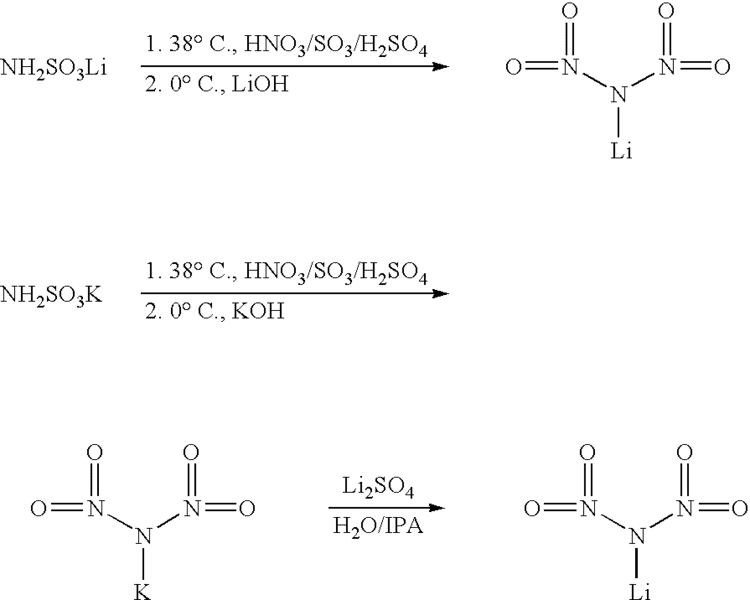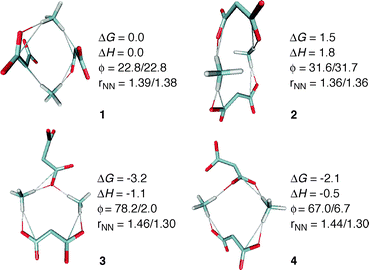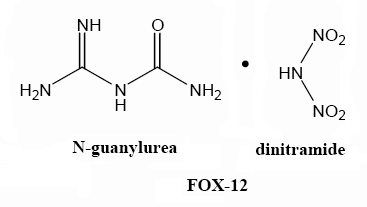Molar mass 124.06 g/mol | Density 1.81 g/cm³ | |
 | ||
Ammonium dinitramide (ADN) is the ammonium salt of dinitraminic acid. ADN decomposes under heat to leave only nitrogen, oxygen, and water. The ions are the ammonium ion NH4+ and the dinitramide N(NO2)2−. It was originally invented in the Soviet Union, but remained classified until it was discovered independently in the United States in 1989 at SRI International. SRI obtained US and international patents for ADN in the mid-1990s at which time scientists from the former Soviet Union revealed they had discovered ADN in the 1970s.

It makes an excellent solid rocket oxidizer with a slightly higher specific impulse than ammonium perchlorate and more importantly, does not leave hydrogen chloride fumes. This property is also of military interest because halogen free smoke is harder to detect. It decomposes into low molecular mass gases so it contributes to higher performance without creating excessive temperatures if used in gun or rocket propellants. The salt is prone to detonation under high temperatures and shock more so than the perchlorate. It can be synthesized from ammonium nitrate, anhydrous nitric acid, and fuming sulfuric acid containing 20% free sulfur trioxide. A base other than ammonia must be added before the acid dinitramide decomposes. The final product is obtained by fractional crystallization.
The EURENCO Bofors company produced LMP-103S as a 1-to-1 substitute for hydrazine by dissolving 65% ammonium dinitramide, NH4N(NO2)2, in 35% water solution of methanol and ammonia. LMP-103S has 6% higher specific impulse and 30% higher impulse density than hydrazine monopropellant. Additionally, hydrazine is highly toxic and carcinogenic, while LMP-103S is only moderately toxic. LMP-103S is UN Class 1.4S allowing for transport on commercial aircraft, and was demonstrated on the Prisma satellite in 2010. Special handling is not required. LMP-103S could replace hydrazine as the most commonly used monopropellant.





